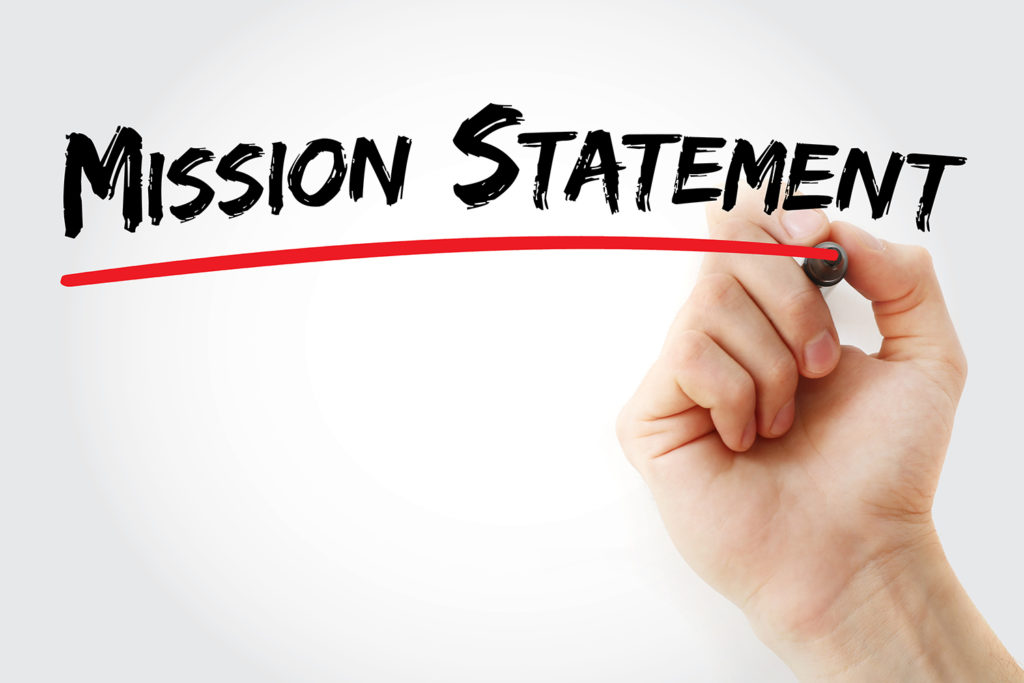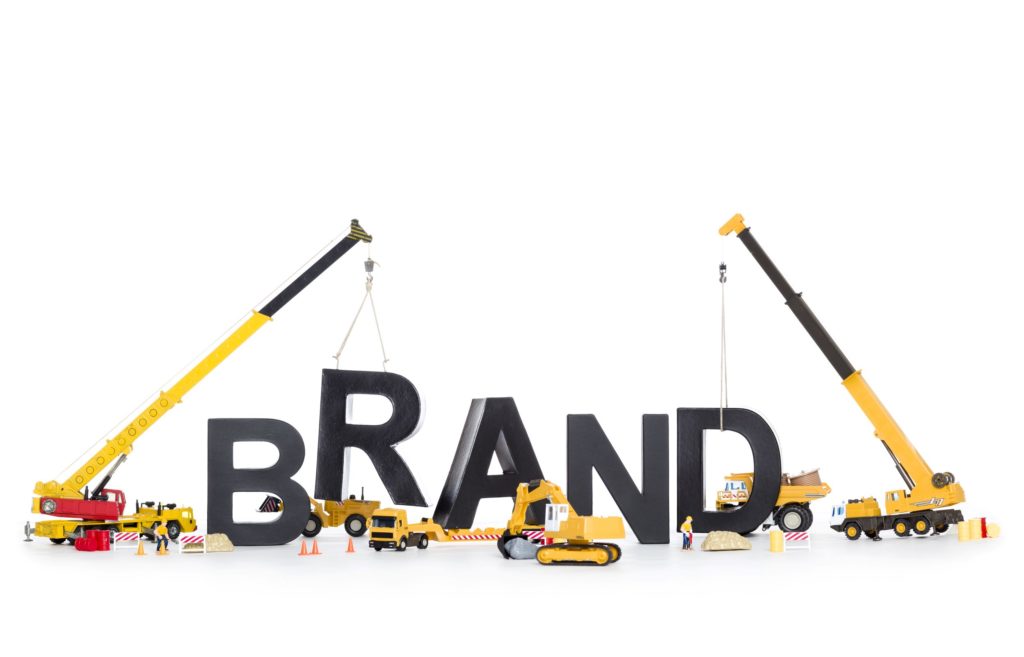
When you’re just getting started, you probably don’t think much about branding for nonprofits.
You’re more concerned with getting the word out.
You need to find donors and supporters who will give often and give big so you can grow your small nonprofit and fulfill its mission.
You need to get noticed, build an aura of excitement, and convince people to support your fledgling organization with their time, their donations, and their connections.
And you know what makes all that easier?
Branding.
You see, there are millions of nonprofits in the world, all vying for donors’ attention.
What makes your nonprofit stand out is your brand.
Branding helps people see who you are and get excited about your mission.
But branding isn’t the easiest topic to understand or master.
People often get confused about what branding is, thinking that if they have a logo, they’re done.
But branding is more than that.
So, let’s look at what branding is and isn’t to see the 11 steps of branding that will make fundraising easier for your nonprofit.
What branding for nonprofits is
 Your brand is what makes your nonprofit unique.
Your brand is what makes your nonprofit unique.
It’s about how people think about you and your mission.
When you have a clear brand and you live that brand, you make it easier for people to find you and support you.
The truth is that people like making a difference and that usually means taking a stand for something.
For example, if your nonprofit’s mission is to feed the hungry, you’re taking a stand against hunger. If your mission is to provide housing, you’re taking a stand against homelessness.
Sometimes, this is a little harder. If your nonprofit is a theatre or the symphony, you’re taking a stand for the arts and the importance of theatre and music in peoples’ lives.
See how that works?
If you think about it, the brand of a food pantry and the brand of the symphony are pretty different. A food pantry might be more “do whatever it takes” to provide food, with key messages around the injustice of the lack of access to food for people living in poverty. The symphony might be more about an elegant experience for the audience, with a commitment to bringing in world-class musicians from time to time.
Some people think a brand is just a logo or a slogan, but it’s much more than that. It’s a whole set of feelings and associations you have when you’re reminded of an organization.
Think about McDonald’s. As soon as you see the golden arches, you know exactly what to expect. You know that they serve up food quickly with a fairly uniform quality and that it’s a child-friendly restaurant. You know that they have great fries and ice cream (even though they may not really be that good for you).
Branding for nonprofits is just as important as branding for businesses.
Branding helps people get to know your organization and what you’re all about. Your brand is the lens through which people see your nonprofit’s personality, its ethical code, its vision, and its mission.
Your brand makes you just as easy to spot as those golden arches. As soon as people see your logo, they smile. They feel a sense of trust. Or at least they should.
Jeff Bezos says, “Branding is what people say about you when you’re not in the room.”
If you aren’t building your brand on purpose, you’re leaving the public’s feelings about you to chance, which isn’t a good idea.
Branding and Fundraising
If branding for nonprofits sounds important, it is!
Fundraising is an emotional act. People give based on how they FEEL. And your brand should cause them to feel something – compassion, sympathy, anger, etc.
That means spending time purposefully building your brand is time really well spent. Creating written guidelines that document your brand is especially helpful as your nonprofit starts to grow so you can help others easily understand the brand.
So, where do you start?
Should you jump in first with a logo? Or a public awareness campaign? What about slogans? Or social media messaging?
To make it simple, here are 11 elements of branding you should get clear on so that people know who your nonprofit is and isn’t and exactly what you’re about. And all of that will make fundraising easier as people connect emotionally to your cause.
How to Establish Branding for Nonprofits
 1. Mission statement. This may seem like an odd place to start, but if you aren’t clear about your nonprofit’s mission, you can’t clarify your brand. If you already have a very focused mission statement, congratulations! You’re ahead of the game. If not, it’s time to create a clear, simple mission statement to guide you, defining why your organization exists, who it serves, and what impact you want to have. Your mission statement should be short enough to fit on a t-shirt (less than 20 words) and use simple, jargon-free language. Everyone in your organization should know the mission statement, understand it, and be able to share it. Branding is about everyone in your nonprofit working together to project the essence of who your organization is. It’s part of your organization’s culture and should be second nature to Board, staff, and volunteers alike.
1. Mission statement. This may seem like an odd place to start, but if you aren’t clear about your nonprofit’s mission, you can’t clarify your brand. If you already have a very focused mission statement, congratulations! You’re ahead of the game. If not, it’s time to create a clear, simple mission statement to guide you, defining why your organization exists, who it serves, and what impact you want to have. Your mission statement should be short enough to fit on a t-shirt (less than 20 words) and use simple, jargon-free language. Everyone in your organization should know the mission statement, understand it, and be able to share it. Branding is about everyone in your nonprofit working together to project the essence of who your organization is. It’s part of your organization’s culture and should be second nature to Board, staff, and volunteers alike.
2. Vision Statement. What will the world look like when your nonprofit completely fulfills its mission? Your vision and your brand should create a sense of excitement, especially branding for nonprofits. The reason donors give to your organization the first time and then stick around to give again is because they buy into your vison for the world. You should have this vision clearly in mind before you ever start communicating your brand so that people can easily understand what you’re trying to create. Pip Emery of Amnesty International says, “If you don’t know where you’re going or why you’re relevant, you don’t have a brand.” Your big vision should be apparent in your nonprofit branding.
3. Personality. What kind of personality do you want your organization to have? Of course, a nonprofit isn’t just one person, but organizations still project certain auras and attitudes. Should your nonprofit display more sass or class? There are plenty of nonprofits in both camps and a lot of other choices in between. Your organization’s personality should shine through and be reflected in your own personal excitement about the nonprofit’s mission and through the tone of your organization’s communications.
4. Research your audience. Find out who your donors are, where they are, and what they respond to. Are they attracted to humor? To sentiment? To high energy? What do they value most about your nonprofit’s mission? What do they get most excited about? Your brand’s elements should appeal to your intended donor base. That means you can’t just design the brand to make you or your Board happy. The brand needs to appeal to potential supporters. Don’t be afraid to run ideas, concepts, fonts, colors, and graphics by current or prospective donors to get their input. It’s much easier to get feedback upfront before your logo is splashed everywhere.
5. Research other nonprofits. Who else is out there doing something similar to what you have planned? What’s their brand? How will yours be different? What does their logo look like? What messages do they use? What does their website look like? Do certain colors and images stick out? By knowing exactly who they are, you can highlight the differences between them and you so the community doesn’t get confused. People don’t like seeing multiple nonprofits who appear to be doing the same thing. Years ago, there were 4 nonprofits in Knoxville all serving the homeless and they appeared to be providing the same services (beds, meals, chapel, thrift stores). A local foundation called the leaders together and told them to figure out their niche because they were tired of funding duplicated services. More and more foundations and donors are looking to fund unique programs and services, so figure out how yours are different and make that part of your brand.

6. Stories. What stories are you going to tell about lives you’ve changed? What one success story sums up what you’re all about, showing the needs you’re there to fulfill and how you’re making a difference? When you figure out which stories you want to tell and how you want to frame them, donors will have a very good idea of why your organization exists and where they fit in. These stories define who you are and what you want donors to think about you. Whenever they see your logo, read your posts, or watch your videos, these narratives and the emotions they evoke will come to mind. That means you need to choose and prepare stories wisely, instead of telling them off the cuff. Make sure everyone on staff, everyone on the Board, and all your volunteers know these stories, too.
7. Logo. Once you know what you’re all about and what your audience responds to then you’re ready to think about the logo. Your logo is the graphical face of your brand and not something to be taken lightly. No matter how much of a tiny, shoe-string budget you are on, you will probably benefit from working with a professional. Be prepared to spend a good bit of time with your designer to help them understand your brand so they can work their magic on the design. A logo should stand out. It should focus on your mission. You can use a stand-alone graphic, a text rendition of a name or acronym, or both. You may want to come up with a very short tagline that you can include when appropriate. The logo should be simple with a few colors or possibly high contrast black and white. Think carefully about color because colors can evoke emotion. Green is great for environmental nonprofits but choose the right green so it’s easy to see both online and in print. Orange and yellow are high-energy, blue is calming, and red packs a punch. Choose the colors for your logo carefully and get the exact color numbers from your designer so you can use them elsewhere.
8. Colors and font. Once you have chosen colors for your logo, carry them over into your website, your letterhead, your signage, brochures, and even on t-shirts. The idea behind establishing a brand is that people will quickly and almost subliminally think of your organization without having to spend too much mental effort when one of your videos or posts with the logo catches their eye. The same is true of certain fonts that can help identify your nonprofit. If you have a tagline, you should always use the same font. If you can, use that font as a header on your website, too, so it’s a more prominent part of your brand. By the way, while your body text will probably be a different font from the headers on your website and in your newsletter, you should be consistent in the use of those fonts as well. Switching fonts every time you communicate with donors leaves a sense of disorganization. Your brand should be consistent even in small ways.
9. Templates. Once you have an established logo, font, and colors, you should include them in all templates for your website, on stationery, and in everything from newsletters to Christmas greetings to thank you cards. Make sure everyone knows how to use the templates in all forms of communication. A set of clear branding guidelines will be very helpful to you in creating templates and helping everyone use them correctly.
10. Consistency. When you have all of your branding in place and you’ve established that it’s working, be consistent. Consistency is key in successful branding for nonprofits. Don’t constantly switch up colors or fonts. Don’t change the tone of communications and sound like a comedian one minute and a funeral director the next. If you can have one person dedicated to overseeing communications like newsletters, blog pieces, and social media posts, that may help keep your message consistent. Of course, you want your volunteers, staff and Board to help spread the word as well, so you should also make sure that you’re educating them about stories, new programs and services, and other news in a focused and consistent way. They’ll be more likely to stay “on brand” when they tell others about you.
11. Monitor your branding. Hopefully, you have chosen branding elements that will work for a long while, but sometimes you will need to tweak them. Don’t be afraid to change as the times or situation changes. Make sure that things like email responses and Facebook or Twitter responses are on brand, too. If donors don’t like slogans, taglines, or posts, or if they give you feedback about newsletters, stories, videos, or photos, listen to them. You want your brand to be trustworthy and to evoke positive emotions. Keeping up positive energy around your brand is a day-to-day effort, not a one-time choice of graphics and colors.
The Bottom Line
 Branding is important for nonprofits. It’s about being clear about who your organization is and what you stand for. It’s about being authentic in messaging, images, and video so that donors can clearly see your mission, your vision, the way you help others, and how they can be a part of that.
Branding is important for nonprofits. It’s about being clear about who your organization is and what you stand for. It’s about being authentic in messaging, images, and video so that donors can clearly see your mission, your vision, the way you help others, and how they can be a part of that.
When your donors see your logo, visit your site, or even meet you in person, they will be reminded that you have an exciting mission, that you are trustworthy, and that they want to be a part of your success.

![Build a Nonprofit Website that Works [Steal These Ideas!]](https://getfullyfunded.com/wp-content/uploads/2012/09/AdobeStock_260038257-scaled-500x383.jpeg)




Thank you for including a section on monitoring branding. Branding is not a “set it and forget it” task. It’s a living, breathing thing that grows and evolves.
Thanks Jason. Most of branding and marketing and fundraising is like a toddler – you don’t really want to turn your back on it for long.